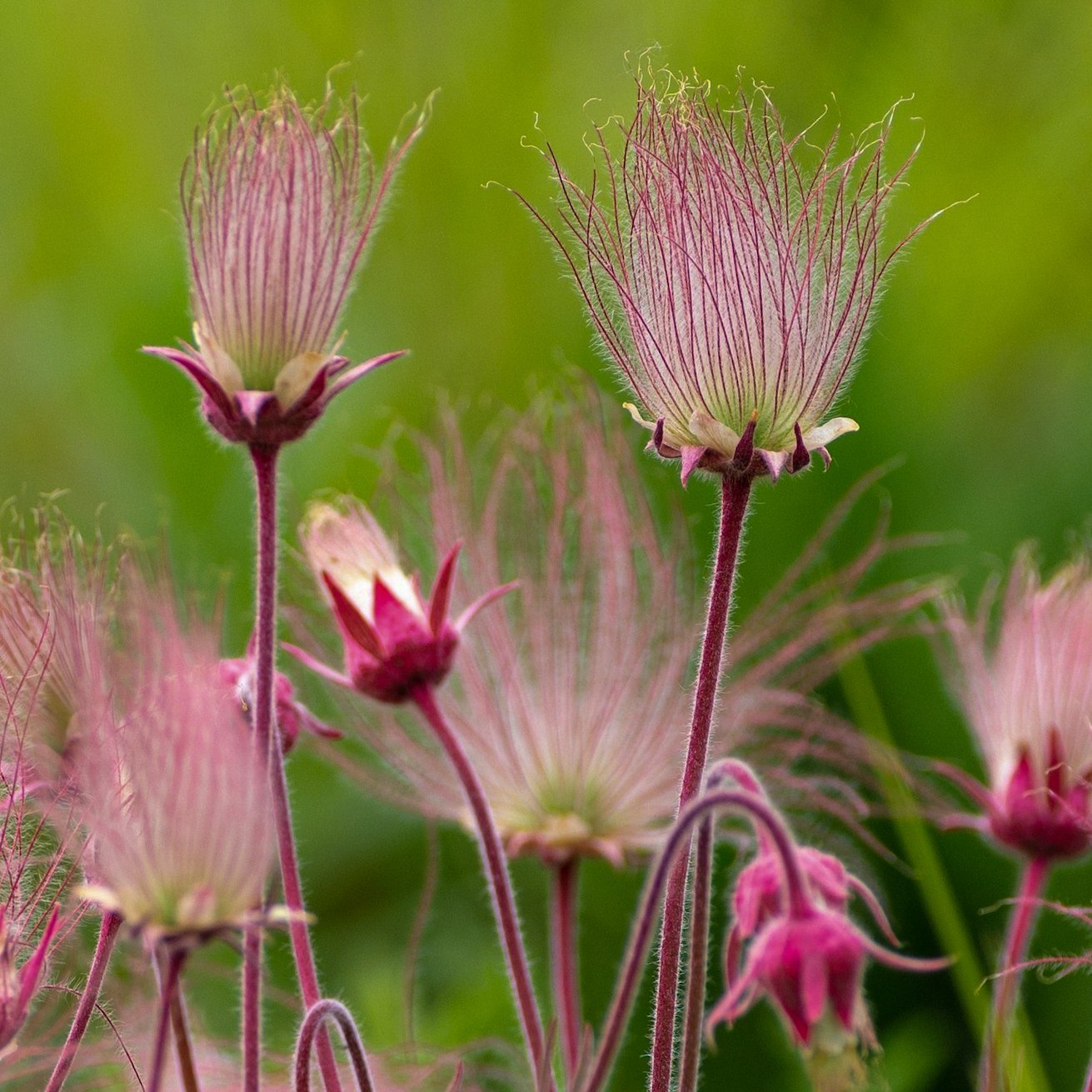 Image 1 of 5
Image 1 of 5

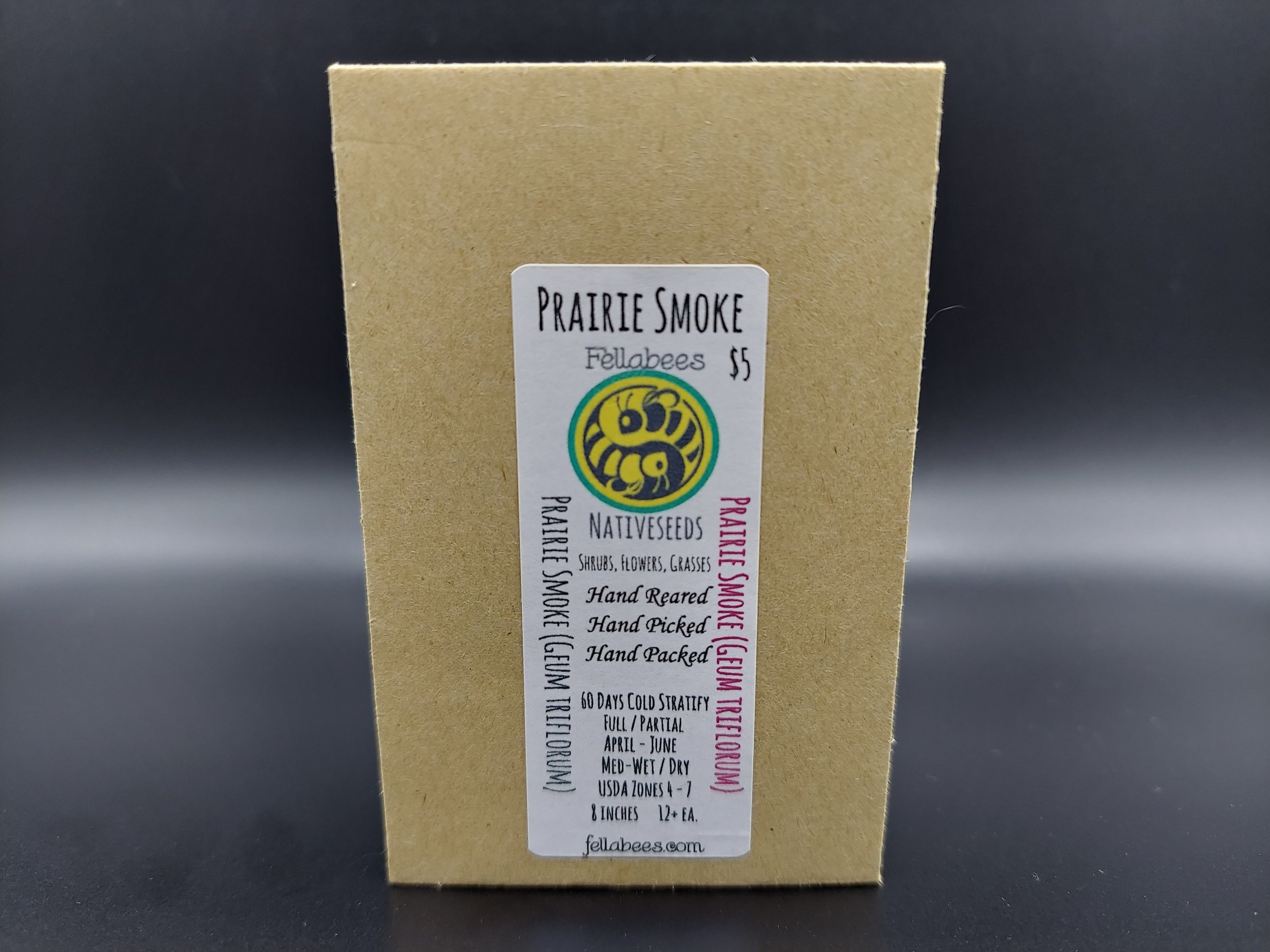 Image 2 of 5
Image 2 of 5

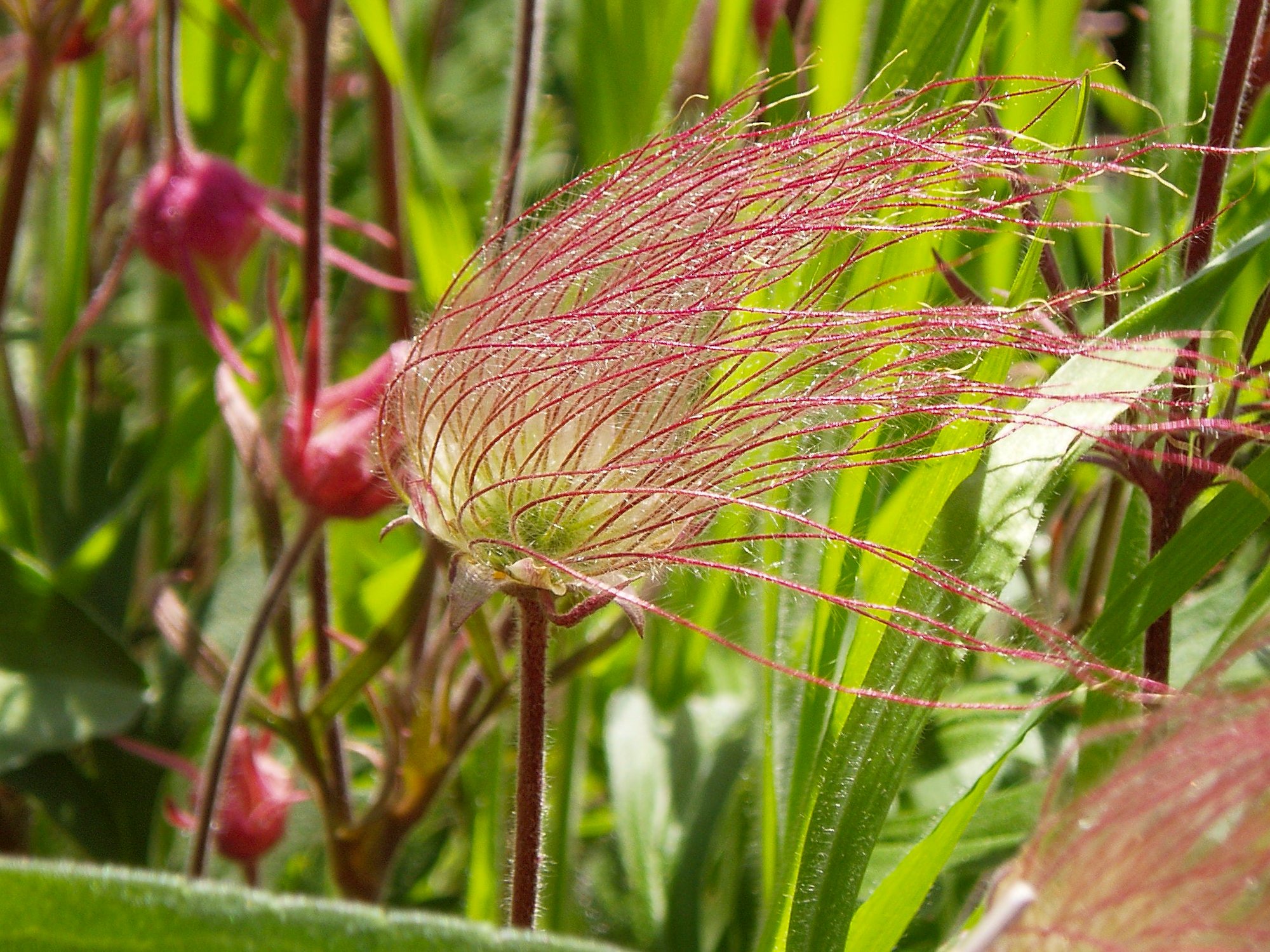 Image 3 of 5
Image 3 of 5

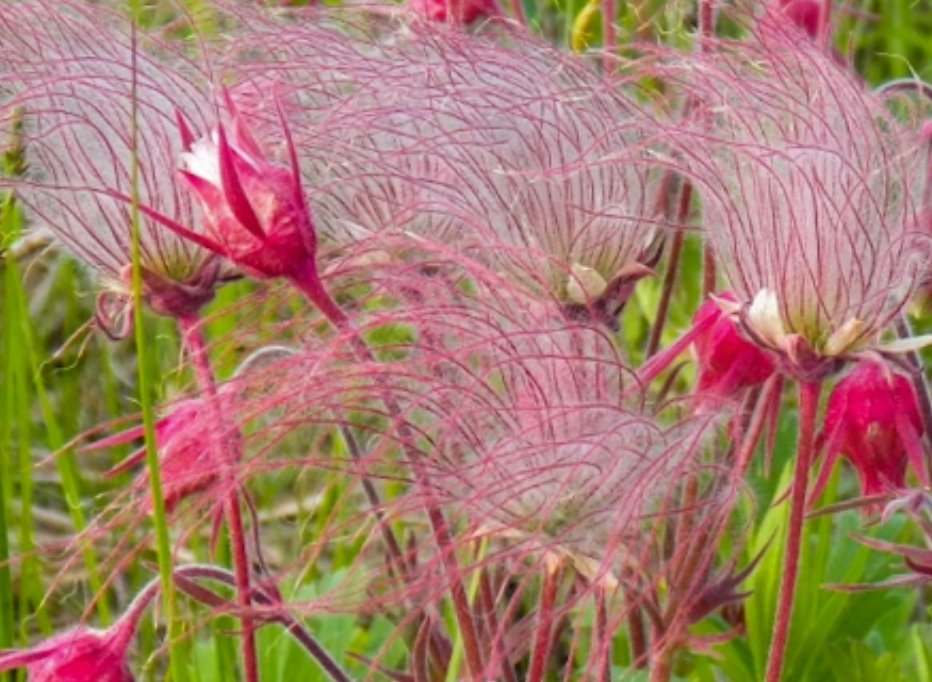 Image 4 of 5
Image 4 of 5

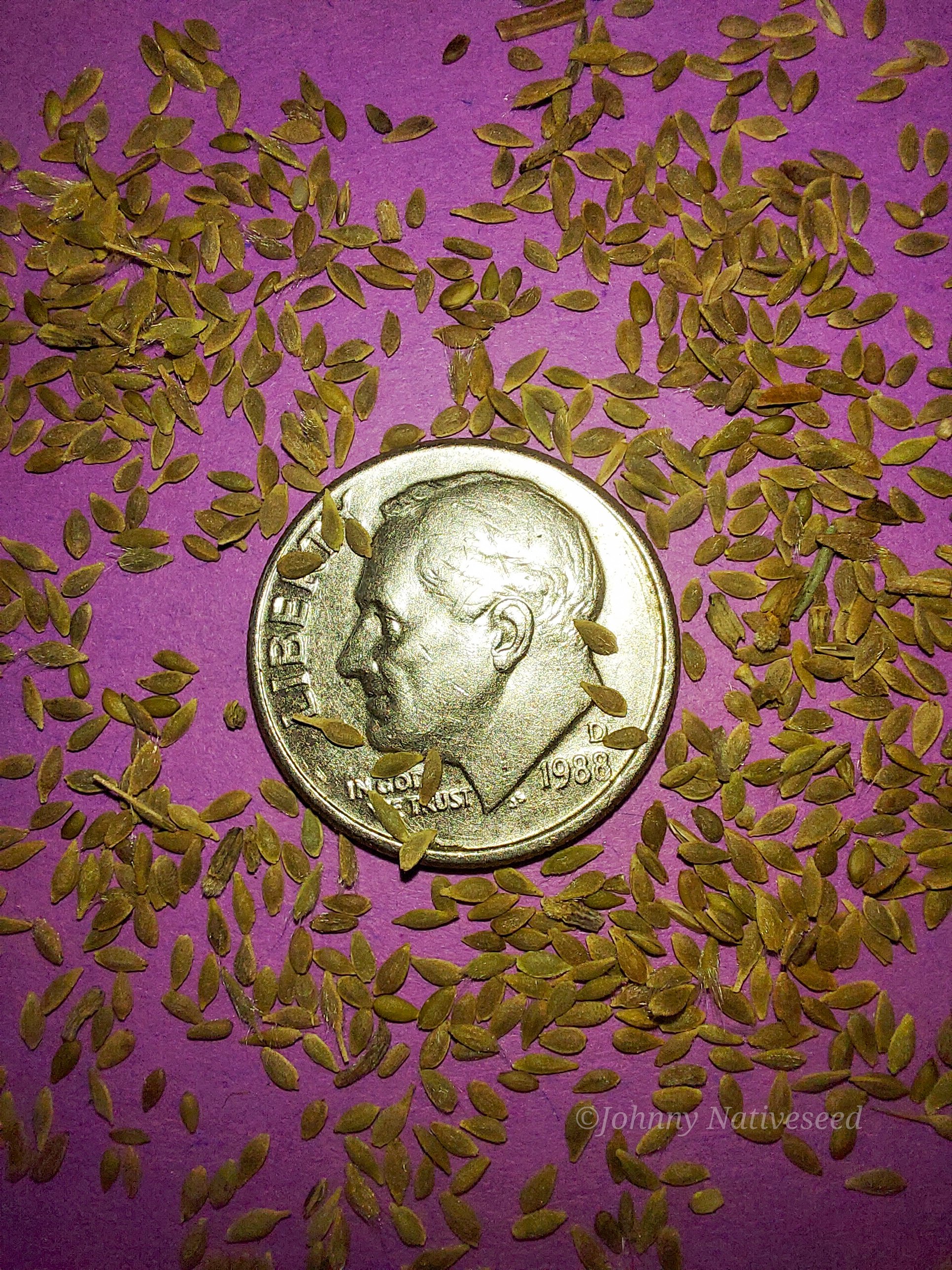 Image 5 of 5
Image 5 of 5






Prairie Smoke (Geum triflorum)
Prairie Smoke (Geum triflorum)
Geum triflorum, more commonly known as Prairie Smoke, Old Man's Whiskers, Torchflower, Three-sisters, Long-plumed Purple Avens, Lion's Beard, or Three-Flowered Avens, is a magical looking, spring-blooming perennial herbaceous plant of the Rosaceae (Rose) family.
It is a hemiboreal continental climate species that is widespread in the colder and drier environments of western North America, although it does occur in isolated populations as far east as New York and Ontario. It is particularly known for the long feathery plumes on the seed heads that have inspired many of the regional common names which assist the plant in its strategy of utilizing the wind to disperse its seeds.
Early in the spring, the leaves of Prairie Smoke can often be found flat to the ground and are in poor condition, but they soon become more upright in response to the warmer days and lack of snow cover. In the heat of a dry summer, the leaves will lie back down closer to the earth.
The plants resume growth in the fall as other plants are starting to go dormant, developing a mound of deep grey-green leaves. The leaves are evergreen in areas without severe cold or there is protective snow cover, though they can often turn purple, orange, or reddish in color.
Indigenous peoples of the Blackfeet Nation were known to made an infusion of the roots to treat sore throats, canker sores in the mouth, and as an application to wounds, and the infusion was also mixed with grease to create a salve used for the treatment of rashes, blisters, sores, and surface wounds. Infusions of the whole plant were used to treat severe coughs. The roots of Prairie Smoke were scraped and mixed with tobacco and then smoked by the Blackfeet to "clear the head". They also drank a tea made of the whole plant to promote general health.
This plant is listed as native and present but rare in several counties of the states, Missouri, Michigan, and New York.
Plant Details
USDA Zones: 3-7
Germination Needs: 60 Days Cold Stratification, and germinates best when sown directly outdoors.
Life Cycle: Perennial
Sun Exposure: Full to Partial
Soil Moisture: Medium-Wet, Medium, Medium-Dry, Dry
Plant Spacing: 6-8 inches
Height: 8 inches
Bloom time: April, May, June
Bloom Color: Pink
Advantages :
Pollinator Favorite: butterflies, moths, bees, wasps, beetles
Bird Favorite: seeds, insects, fruit, nectar, nesting, perchs.
Deer Resistant: Yes
Native to : Wisconsin, Illinois, Michigan, New York, Minnesota, Iowa, Missouri, North Dakota, South Dakota, Montana, Wyoming, Colorado, New Mexico, Arizona, Utah, Nevada, Idaho, Washington, Oregon, and California.
.
.
Packet quantities:
We pride ourselves on ethical, hands on, ecological management, using no mechanical or chemical methods whatsoever.
All of our native seed is hand reared, hand picked, and hand packed from native prairies under our exclusive management, never breaking chain of custody from the field until it is sent to you. Each packet is hand prepared for shipment by us, directly.
*Due to limited supply, labor to harvest the seed, this species packet is packed with 12 or more seed each.
Small seed species will contain greater than 20-25 seed
Large seed species will contain greater than 10-15 seed
It is our mission to spread the wealth of native plant and pollinator ecological sustainability, and educate back yard gardeners as well as corporate and government entities in how to germinate, grow, and benefit from native synergies.
Thank you for your support, it is because of you, that we can grow together to do, what we do.🐛🦋🐝🐞🌾🌱🌼🧡
Prairie Smoke (Geum triflorum)
Geum triflorum, more commonly known as Prairie Smoke, Old Man's Whiskers, Torchflower, Three-sisters, Long-plumed Purple Avens, Lion's Beard, or Three-Flowered Avens, is a magical looking, spring-blooming perennial herbaceous plant of the Rosaceae (Rose) family.
It is a hemiboreal continental climate species that is widespread in the colder and drier environments of western North America, although it does occur in isolated populations as far east as New York and Ontario. It is particularly known for the long feathery plumes on the seed heads that have inspired many of the regional common names which assist the plant in its strategy of utilizing the wind to disperse its seeds.
Early in the spring, the leaves of Prairie Smoke can often be found flat to the ground and are in poor condition, but they soon become more upright in response to the warmer days and lack of snow cover. In the heat of a dry summer, the leaves will lie back down closer to the earth.
The plants resume growth in the fall as other plants are starting to go dormant, developing a mound of deep grey-green leaves. The leaves are evergreen in areas without severe cold or there is protective snow cover, though they can often turn purple, orange, or reddish in color.
Indigenous peoples of the Blackfeet Nation were known to made an infusion of the roots to treat sore throats, canker sores in the mouth, and as an application to wounds, and the infusion was also mixed with grease to create a salve used for the treatment of rashes, blisters, sores, and surface wounds. Infusions of the whole plant were used to treat severe coughs. The roots of Prairie Smoke were scraped and mixed with tobacco and then smoked by the Blackfeet to "clear the head". They also drank a tea made of the whole plant to promote general health.
This plant is listed as native and present but rare in several counties of the states, Missouri, Michigan, and New York.
Plant Details
USDA Zones: 3-7
Germination Needs: 60 Days Cold Stratification, and germinates best when sown directly outdoors.
Life Cycle: Perennial
Sun Exposure: Full to Partial
Soil Moisture: Medium-Wet, Medium, Medium-Dry, Dry
Plant Spacing: 6-8 inches
Height: 8 inches
Bloom time: April, May, June
Bloom Color: Pink
Advantages :
Pollinator Favorite: butterflies, moths, bees, wasps, beetles
Bird Favorite: seeds, insects, fruit, nectar, nesting, perchs.
Deer Resistant: Yes
Native to : Wisconsin, Illinois, Michigan, New York, Minnesota, Iowa, Missouri, North Dakota, South Dakota, Montana, Wyoming, Colorado, New Mexico, Arizona, Utah, Nevada, Idaho, Washington, Oregon, and California.
.
.
Packet quantities:
We pride ourselves on ethical, hands on, ecological management, using no mechanical or chemical methods whatsoever.
All of our native seed is hand reared, hand picked, and hand packed from native prairies under our exclusive management, never breaking chain of custody from the field until it is sent to you. Each packet is hand prepared for shipment by us, directly.
*Due to limited supply, labor to harvest the seed, this species packet is packed with 12 or more seed each.
Small seed species will contain greater than 20-25 seed
Large seed species will contain greater than 10-15 seed
It is our mission to spread the wealth of native plant and pollinator ecological sustainability, and educate back yard gardeners as well as corporate and government entities in how to germinate, grow, and benefit from native synergies.
Thank you for your support, it is because of you, that we can grow together to do, what we do.🐛🦋🐝🐞🌾🌱🌼🧡
Prairie Smoke (Geum triflorum)
Geum triflorum, more commonly known as Prairie Smoke, Old Man's Whiskers, Torchflower, Three-sisters, Long-plumed Purple Avens, Lion's Beard, or Three-Flowered Avens, is a magical looking, spring-blooming perennial herbaceous plant of the Rosaceae (Rose) family.
It is a hemiboreal continental climate species that is widespread in the colder and drier environments of western North America, although it does occur in isolated populations as far east as New York and Ontario. It is particularly known for the long feathery plumes on the seed heads that have inspired many of the regional common names which assist the plant in its strategy of utilizing the wind to disperse its seeds.
Early in the spring, the leaves of Prairie Smoke can often be found flat to the ground and are in poor condition, but they soon become more upright in response to the warmer days and lack of snow cover. In the heat of a dry summer, the leaves will lie back down closer to the earth.
The plants resume growth in the fall as other plants are starting to go dormant, developing a mound of deep grey-green leaves. The leaves are evergreen in areas without severe cold or there is protective snow cover, though they can often turn purple, orange, or reddish in color.
Indigenous peoples of the Blackfeet Nation were known to made an infusion of the roots to treat sore throats, canker sores in the mouth, and as an application to wounds, and the infusion was also mixed with grease to create a salve used for the treatment of rashes, blisters, sores, and surface wounds. Infusions of the whole plant were used to treat severe coughs. The roots of Prairie Smoke were scraped and mixed with tobacco and then smoked by the Blackfeet to "clear the head". They also drank a tea made of the whole plant to promote general health.
This plant is listed as native and present but rare in several counties of the states, Missouri, Michigan, and New York.
Plant Details
USDA Zones: 3-7
Germination Needs: 60 Days Cold Stratification, and germinates best when sown directly outdoors.
Life Cycle: Perennial
Sun Exposure: Full to Partial
Soil Moisture: Medium-Wet, Medium, Medium-Dry, Dry
Plant Spacing: 6-8 inches
Height: 8 inches
Bloom time: April, May, June
Bloom Color: Pink
Advantages :
Pollinator Favorite: butterflies, moths, bees, wasps, beetles
Bird Favorite: seeds, insects, fruit, nectar, nesting, perchs.
Deer Resistant: Yes
Native to : Wisconsin, Illinois, Michigan, New York, Minnesota, Iowa, Missouri, North Dakota, South Dakota, Montana, Wyoming, Colorado, New Mexico, Arizona, Utah, Nevada, Idaho, Washington, Oregon, and California.
.
.
Packet quantities:
We pride ourselves on ethical, hands on, ecological management, using no mechanical or chemical methods whatsoever.
All of our native seed is hand reared, hand picked, and hand packed from native prairies under our exclusive management, never breaking chain of custody from the field until it is sent to you. Each packet is hand prepared for shipment by us, directly.
*Due to limited supply, labor to harvest the seed, this species packet is packed with 12 or more seed each.
Small seed species will contain greater than 20-25 seed
Large seed species will contain greater than 10-15 seed
It is our mission to spread the wealth of native plant and pollinator ecological sustainability, and educate back yard gardeners as well as corporate and government entities in how to germinate, grow, and benefit from native synergies.
Thank you for your support, it is because of you, that we can grow together to do, what we do.🐛🦋🐝🐞🌾🌱🌼🧡
